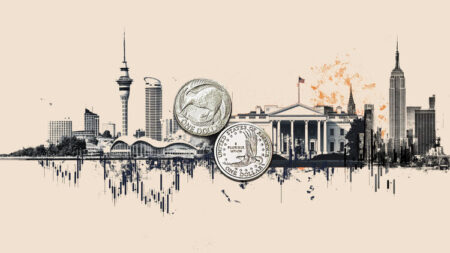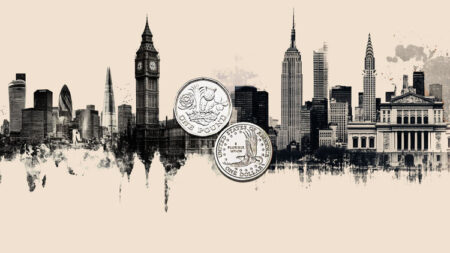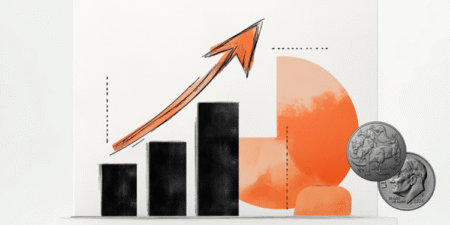Here is what you need to know on Friday, October 3:
Following the bearish action seen in the first half of the week, the US Dollar (USD) managed to stay resilient against its rivals on Thursday. As the US federal government shutdown enters the third day, the USD Index holds steady near 98.00. September Nonfarm Payrolls data will be delayed until the government funding is restored. Hence, market participants will pay close attention to the Institute for Supply Management’s (ISM) Services Purchasing Managers’ Index (PMI) report for September.
US Dollar Price This week
The table below shows the percentage change of US Dollar (USD) against listed major currencies this week. US Dollar was the weakest against the Japanese Yen.
| USD | EUR | GBP | JPY | CAD | AUD | NZD | CHF | |
|---|---|---|---|---|---|---|---|---|
| USD | -0.23% | -0.40% | -1.31% | 0.18% | -0.85% | -0.68% | -0.05% | |
| EUR | 0.23% | -0.17% | -1.26% | 0.41% | -0.62% | -0.46% | 0.17% | |
| GBP | 0.40% | 0.17% | -0.99% | 0.58% | -0.51% | -0.29% | 0.34% | |
| JPY | 1.31% | 1.26% | 0.99% | 1.56% | 0.53% | 0.53% | 1.34% | |
| CAD | -0.18% | -0.41% | -0.58% | -1.56% | -0.98% | -0.86% | -0.24% | |
| AUD | 0.85% | 0.62% | 0.51% | -0.53% | 0.98% | 0.16% | 0.79% | |
| NZD | 0.68% | 0.46% | 0.29% | -0.53% | 0.86% | -0.16% | 0.78% | |
| CHF | 0.05% | -0.17% | -0.34% | -1.34% | 0.24% | -0.79% | -0.78% |
The heat map shows percentage changes of major currencies against each other. The base currency is picked from the left column, while the quote currency is picked from the top row. For example, if you pick the US Dollar from the left column and move along the horizontal line to the Japanese Yen, the percentage change displayed in the box will represent USD (base)/JPY (quote).
The Senate did not vote on the funding legislation on Thursday in observance of the Yom Kippur holiday. Meanwhile, United States (US) President Donald Trump noted that he will meet with Russ Vought, the head of the Office of Management and Budget, to see which federal programs could be cut. Additionally, the Trump administration announced late Wednesday that they froze $26 billion for Democratic-leaning states. Early Friday, US stock index futures rise between 0.2% and 0.3%, while the 10-year US Treasury bond yield clings to small daily gains at around 4.1%.
In the Asian session, the data from Japan showed that the Unemployment Rate rose to 2.6% in August from 2.3% in July. This print came in above the market expectation of 2.4%. In the meantime, Bank of Japan (BoJ) Governor Kazuo Ueda said in the Asian session that the risk of the BoJ being behind the curve on inflation is not that big but added that it warrants attention. The 2025 Liberal Democratic Party (LDP) presidential election will take place on Saturday to elect the next leader of the LDP, who will likely become the new Prime Minister, replacing Shigeru Ishiba. USD/JPY registered small gains and snapped a four-day losing streak on Thursday. The pair inches higher in the European morning and trades near 147.50.
Gold fluctuated in a wide range on Thursday before closing the day marginally lower. XAU/USD struggles to find direction early Friday and trades at around $3,860.
EUR/USD registered moderate losses on Thursday but managed to stabilize above 1.1700 early Friday. The Eurostat will publish the Producer Price Index (PPI) data for August later in the session and European Central Bank (ECB) President Christine Laagrde will deliver a speech at the farewell symposium for DNB President Klaas Knot in Amsterdan, Netherlands.
GBP/USD lost about 0.3% on Thursday, pressured by the recovery seen in the USD in the American session. The pair keeps its footing in the European morning on Friday and trades near 1.3450.
US Dollar FAQs
The US Dollar (USD) is the official currency of the United States of America, and the ‘de facto’ currency of a significant number of other countries where it is found in circulation alongside local notes. It is the most heavily traded currency in the world, accounting for over 88% of all global foreign exchange turnover, or an average of $6.6 trillion in transactions per day, according to data from 2022.
Following the second world war, the USD took over from the British Pound as the world’s reserve currency. For most of its history, the US Dollar was backed by Gold, until the Bretton Woods Agreement in 1971 when the Gold Standard went away.
The most important single factor impacting on the value of the US Dollar is monetary policy, which is shaped by the Federal Reserve (Fed). The Fed has two mandates: to achieve price stability (control inflation) and foster full employment. Its primary tool to achieve these two goals is by adjusting interest rates.
When prices are rising too quickly and inflation is above the Fed’s 2% target, the Fed will raise rates, which helps the USD value. When inflation falls below 2% or the Unemployment Rate is too high, the Fed may lower interest rates, which weighs on the Greenback.
In extreme situations, the Federal Reserve can also print more Dollars and enact quantitative easing (QE). QE is the process by which the Fed substantially increases the flow of credit in a stuck financial system.
It is a non-standard policy measure used when credit has dried up because banks will not lend to each other (out of the fear of counterparty default). It is a last resort when simply lowering interest rates is unlikely to achieve the necessary result. It was the Fed’s weapon of choice to combat the credit crunch that occurred during the Great Financial Crisis in 2008. It involves the Fed printing more Dollars and using them to buy US government bonds predominantly from financial institutions. QE usually leads to a weaker US Dollar.
Quantitative tightening (QT) is the reverse process whereby the Federal Reserve stops buying bonds from financial institutions and does not reinvest the principal from the bonds it holds maturing in new purchases. It is usually positive for the US Dollar.
(This story was corrected on October 3 at 08:11 GMT to say that Gold fluctuated in a wide range on Thursday, not Wednesday.)
Read the full article here















